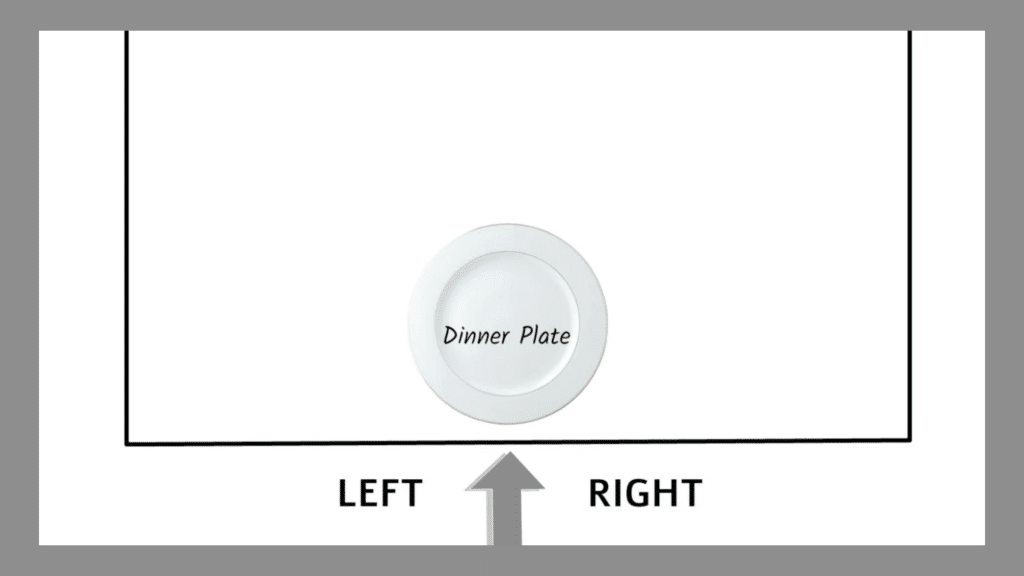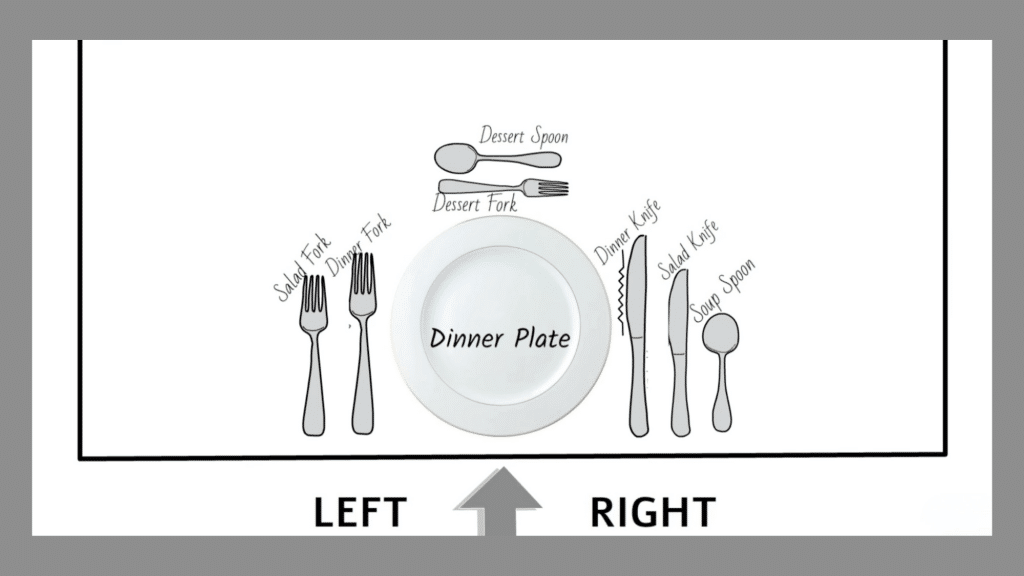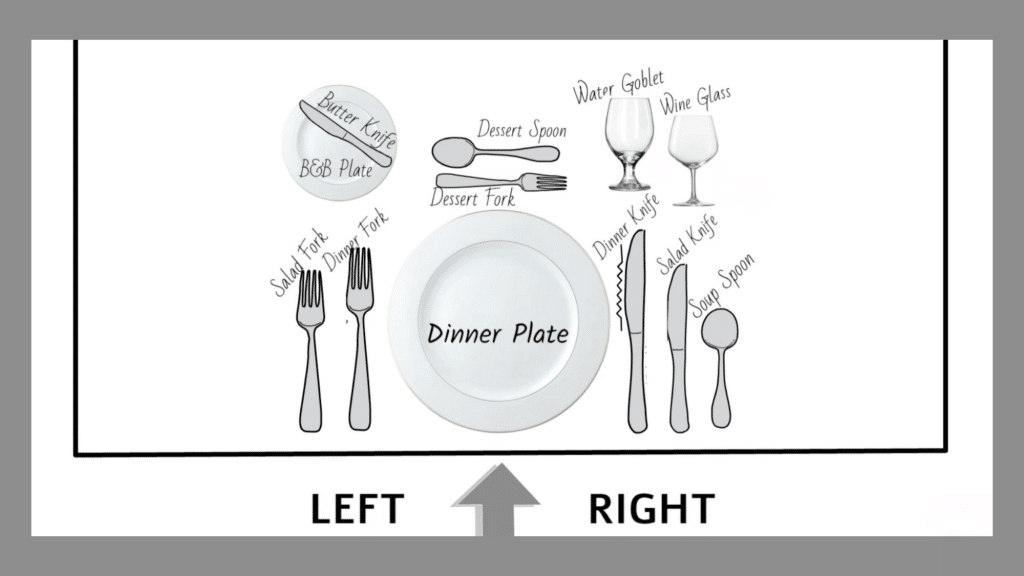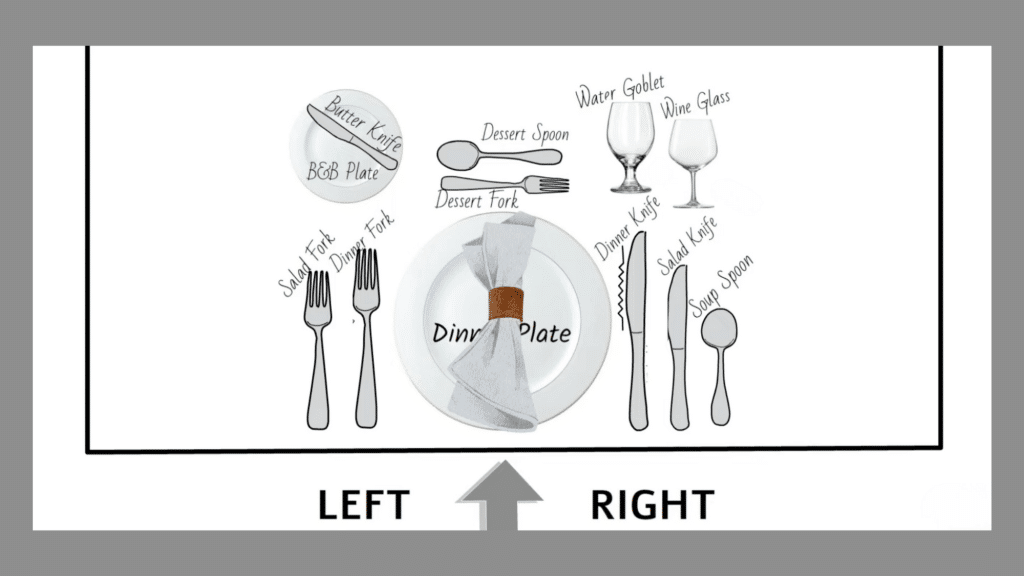Setting a table might seem intimidating, but mastering a basic table setting is simpler than you think. You don’t need fancy china or complicated rules to create an inviting dining space.
With just a few essential items and some straightforward placement techniques, anyone can arrange a table that looks polished and welcoming.
A proper basic table setting works for everything from weeknight family dinners to casual gatherings with friends. Once you learn these fundamentals, you’ll feel confident hosting any meal.
Ready to learn the essentials? Let me show you how to set a table that makes every meal feel a little more special.
Why a Basic Table Setting Matters Even for Everyday Meals?
A thoughtfully arranged table setting can make even the simplest weeknight dinner feel special.
Taking a few moments to set the table shows care and creates a welcoming space for your family or guests. An everyday table setting doesn’t need to be fancy or complicated.
Even basic arrangements help establish structure and make meals feel more intentional. When everyone has their own designated spot with the essentials they need, it naturally encourages people to slow down, sit together, and enjoy the meal.
A casual table setting takes just minutes to arrange but makes a noticeable difference in how the meal feels, turning ordinary moments into meaningful ones.
Materials Needed for a Basic Table Setting
Before you start setting your table, gather these essential items. The good news is that a basic table setting requires just a few key pieces you likely already have in your kitchen.
| Category | Items |
|---|---|
| Plates | Dinner plate Optional: Salad plate or soup bowl |
| Utensils | Dinner fork Dinner knife Optional: Salad fork, salad knife, soup spoon Optional: Fish fork, fish knife |
| Dessert Utensils | Dessert fork and/or dessert spoon |
| Bread Setting | Bread and butter (B&B) plate Butter knife |
| Glassware | Water glass Optional: Wine glass |
| Napkin | Napkin |
| Décor | Optional: Simple décor (e.g., candles, flower buds) |
Remember, not everything on this list is required for every meal. Start with the essentials – plate, fork, knife, spoon, glass, and napkin – then add additional items based on what you’re serving.
Step-by-Step Instructions: How to Set a Basic Table
Setting a table the right way helps meals feel more organized and welcoming, even for casual occasions. It doesn’t have to be complicated.
With just a few easy steps, you can set everything up correctly using items you probably already have at home.
1. Start with the Dinnerware

Start by placing the dinner plate in the center of where each person will sit. This is the base of your table setting. If you are serving a first course like salad or soup, you can place the salad plate or soup bowl right on top of the dinner plate.
This keeps everything neat and saves space on the table. Keeping the plates stacked like this also makes it easier to serve the meal in order.
2. Arrange the Utensils

Place the forks on the left side of the plate and the knives and spoons on the right. Start with the dinner fork on the left. Then put the dinner knife on the right side of the plate with the sharp edge facing the plate.
If you are serving salad, add the salad fork to the left of the dinner fork, and the salad knife next to the dinner knife. The soup spoon goes farthest to the right. Utensils should be used from the outside in.
3. Add Dessert Utensils

Dessert utensils go just above the dinner plate, placed sideways. If dessert will be eaten with a spoon, like ice cream, place the spoon above the plate with the handle pointing to the right.
For desserts like cake that need a fork, place the fork above the plate with the handle pointing to the left. If you prefer, you can wait and bring dessert utensils out with the dessert instead of setting them on the table in advance.
4. Set the Bread Plate and Glassware

The small bread plate goes at the top left of the dinner plate, above the forks. Place a small butter knife on it at an angle with the blade turned inward. On the right side, above the knives, place a water glass.
If you are serving wine or another drink, place the wine glass just a little to the right of the water glass. This setup keeps everything within easy reach and in the correct place for each guest.
5. Add the Napkin and Finishing Touches

Place the napkin in a spot that looks neat and is easy to grab. You can fold it and place it to the left of the forks, under the forks, or on top of the dinner plate.
Try a simple fold to keep things tidy. If you want to decorate the table, you can add a flower bud, a small candle, or another low item. Just make sure it doesn’t block people from seeing each other across the table.
Video Tutorial
For more information, check out this video tutorial by Hospitality Broadcast
More Types of Table Settings You Should Know
Not every meal needs the same table setup. Depending on the occasion or who’s eating, you can make small changes. Below are some common types of table settings that are good to know beyond the basic one.
1. Formal Table Setting – For Dinner Parties or Holiday Meals
Formal settings are used for special meals like family gatherings, weddings, or holiday dinners. They use more plates, glasses, and utensils than usual, but the layout follows a clear order.
- Start with a charger plate under the dinner plate.
- Add a salad plate and soup bowl on top in that order.
- Use three forks on the left: salad, fish (if needed), and dinner fork (closest to the plate).
- On the right, place a soup spoon, a fish knife (if needed), and a dinner knife.
- Dessert spoon and fork go above the plate, with a folded napkin or name card on the plate.
Even though it has more parts, a formal setting helps keep things neat as the meal moves through courses. It shows care and attention, especially when you’re hosting guests for something important.
2. Informal Table Setting – Slightly More than Basic, but Still Casual
Informal settings are a bit nicer than everyday ones, but still easy to set up. They’re great for guests, weekend dinners, or family meals where you want things to look a little more tidy.
- Place the dinner plate in the center, with the napkin on top or beside it.
- Add a salad plate to the left or serve it later if space is tight.
- Use a dinner fork (left), dinner knife, and spoon (right).
- Place the water glass above the knife; add a wine glass if needed.
- Keep things neat but simple – only include items being used.
This setup is a good choice when you want the table to feel nice but not too fancy. It shows a little extra effort without taking too much time. It’s easy to change based on the food you’re serving or the size of your table.
3. Kids’ Table Setting – Safe, Simple, and Easy to Clean
A kids’ table should be easy for little hands to use and safe for mealtime. Use soft or sturdy items that won’t break, and keep things minimal so it doesn’t get messy.
- Use a non-breakable plate in the center, like plastic or melamine.
- Place a kid-sized fork on the left and a spoon on the right (no knife).
- Use a spill-proof cup or tumbler instead of glass.
- Put a napkin under the fork or on the plate.
- Keep decorations fun but low, like paper placemats or stickers.
This type of setup helps teach kids where things belong while keeping cleanup stress-free. It also gives them their own space to enjoy the meal. Make it more fun with colorful napkins or surprises to keep them engaged.
Common Table Setting Mistakes to Avoid
Even experienced hosts make simple table setting errors. One common mistake is mixing up utensil placement, like putting forks on the right side instead of the left.
Another is overloading a casual table with too many unnecessary items. Tall centerpieces can block guests from seeing each other across the table, which disrupts conversation.
Forgetting to provide napkins is surprisingly common, but it leaves diners without an essential item. Finally, placing utensils too close to the plate edge can cause them to fall.
Being aware of these mistakes helps you create a more comfortable and functional table setting every time.
That’s a Wrap
Now you know everything needed to create a basic table setting that works for any casual occasion. These simple techniques take just minutes but make meals feel more intentional and enjoyable.
Start practicing with everyday dinners, and soon arranging place settings will become second nature.
Remember, the goal isn’t perfection – it’s creating a welcoming space where people want to gather and share good food together. Have you tried these table setting tips yet?
Drop a comment below and share your experience or any questions you have about setting your table!


